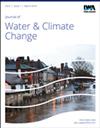评估统计降尺度模式在预测未来气候变化情景中的性能
IF 2.7
4区 环境科学与生态学
Q2 WATER RESOURCES
引用次数: 0
摘要
从大尺度数据集获取局地尺度气候变化信息时,统计降尺度(SD)优于动态降尺度。目前有许多统计缩尺模型可用,但它们的性能比较仍然不足以选择可靠的SD模型。因此,有必要对SD模型的性能进行比较,以确保其在未来气候研究中的适应性。本研究采用统计降尺度模型(SDSM)或多元线性回归和最小二乘支持向量机(LS-SVM)进行降尺度,并与一般环流模型(GCM)的结果进行比较,以确定位于印度中邦的英迪拉萨加尔运河指挥区域的最佳SD模型。利用GCM, Hadley Centre耦合模式3 (HadCM3),分别提取了1961-2001年和2001-2099年的降水、最高温度(Tmax)和最低温度(Tmin),并对其进行了缩减。在未来预估之前,两个SD模式都进行了初步校准(1961-1990年)和验证(1991-2001年),以评估它们在所有气象站(即巴尔瓦尼、东尼马尔和西尼马尔)的降水和温度变量的表现。结果表明,由于降尺度误差较大,降水趋势预测不足,而温度预测过高。本文章由计算机程序翻译,如有差异,请以英文原文为准。
Evaluation of statistical downscaling model's performance in projecting future climate change scenarios
Abstract Statistical downscaling (SD) is preferable to dynamic downscaling to derive local-scale climate change information from large-scale datasets. Many statistical downscaling models are available these days, but comparison of their performance is still inadequately addressed for choosing a reliable SD model. Thus, it is desirable to compare the performance of SD models to ensure their adaptability in future climate studies. In this study, a statistical downscaling model (SDSM) or multi-linear regression and the Least Square Support Vector Machine (LS-SVM) were used to do downscaling and compare the results with those obtained from general circulation model (GCM) for identifying the best SD model for the Indira Sagar Canal Command area located in Madhya Pradesh, India. The GCM, Hadley Centre Coupled Model version 3 (HadCM3), was utilized to extract and downscale precipitation, maximum temperature (Tmax), and minimum temperature (Tmin) for 1961–2001 and then for 2001–2099. Before future projections, both SD models were initially calibrated (1961–1990) and validated (1991–2001) to evaluate their performance for precipitation and temperature variables at all gauge stations, namely Barwani, East Nimar, and West Nimar. Results showed that the precipitation trend was under-predicted owing to large errors in downscaling, while temperature was over-predicted by SD models.
求助全文
通过发布文献求助,成功后即可免费获取论文全文。
去求助
来源期刊

Journal of Water and Climate Change
WATER RESOURCES-
CiteScore
4.80
自引率
10.70%
发文量
168
审稿时长
>12 weeks
期刊介绍:
Journal of Water and Climate Change publishes refereed research and practitioner papers on all aspects of water science, technology, management and innovation in response to climate change, with emphasis on reduction of energy usage.
 求助内容:
求助内容: 应助结果提醒方式:
应助结果提醒方式:


